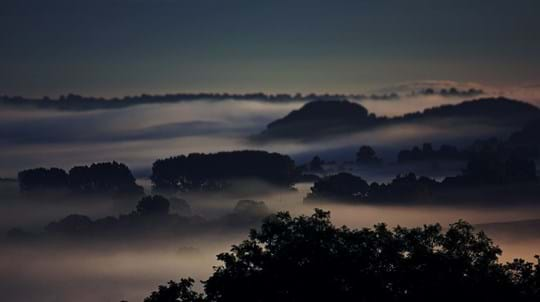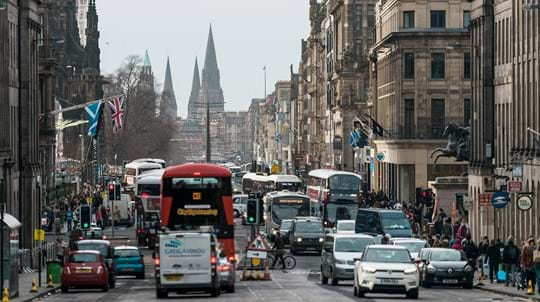What's happening to wildlife near you?
We are desperate for more records to help us understand the effects of warmer, drier summers.
Record with Nature's Calendar
Nature's Calendar
This summer hit a milestone in UK climate history. Records for extreme heat and low rainfall were broken as we experienced the hottest day on record. The effect on our health and economy was widely reported, but what effect do extreme heatwaves have on nature?
Temperatures peaked above 40°C in several places and night-time temperatures were the highest ever recorded. It was also the driest July in over 20 years. Fuelled by greenhouse gases, climate change has already warmed the planet by around 1.1°C. This latest heatwave was relatively short-lived, but we’re set to experience more in the future.
Our climate dictates the natural order, and an unsettled climate can throw the cycles of nature off-kilter. Take fruit and nuts – at our Nature's Calendar project, we received some of our earliest ever ripe blackberry records on 28 June.
Ripening now happens earlier for lots of plant species, and if it gets too hot, fruit may be smaller and drop earlier. This is a mechanism that helps plants and trees preserve water. But this can spell disaster for the wildlife that depends on them later in autumn, when animals like bank voles and blackbirds start building their energy reserves for winter.
We are desperate for more records to help us understand the effects of warmer, drier summers.
Record with Nature's CalendarHeatwaves often go hand-in-hand with drought. A lack of water can cause serious problems for trees and make it look as though you’re seeing a very early autumn.
In dry weather, the sugars in leaves become concentrated and the leaves produce more anthocyanin (red and pink colour pigments).
Consequently, the leaves turn redder or brown, and the tree may shed them to preserve the moisture in its branches and trunk.
Birds have a higher core body temperature than many other animals. They also don’t have sweat glands, so struggle to maintain their body temperature in hot weather. This is why you may have seen birds ‘panting’ in the latest UK heatwave – opening their beak to try and lose some heat.
Despite not being able to sweat, birds still lose a lot of water in hot weather: in their droppings and through respiration. Combine this with their water sources drying up, and they struggle to rehydrate and keep their feathers in top condition.
Intricate food chains are disrupted as hot weather also affects insect populations and dries up the soil. Birds that eat invertebrates struggle to find food.
Hot weather can seriously impact amphibian lifecycles. Warmer water may mean that tadpoles develop faster, but it can also dry up ponds. When this happens, young frogs and toads may leave the pond before they’re fully developed. If they haven’t yet reached the stage where they should leave the pond, they will simply die.
This year we’ve had lots of reports of first amphibian sightings much later than we’d expect – could this mean that late-developing amphibians have been caught out by the heatwave?
Drier conditions also make it harder for amphibians to find the damp, cool spots where they usually take refuge.
Heatwaves play havoc with already-declining insect numbers. Hot weather scorches the plants that insects feed on and kills young caterpillars.
Bumblebees are particularly affected by rising temperatures. Their furry coat means they quickly overheat and can’t fly or forage. Bumblebees do store food reserves in their nests, but these last for just a few days – not sustainable in prolonged heatwaves.
Drought conditions are bad news for badgers and hedgehogs. It’s near impossible to dig their claws into hard, parched ground to unearth beetles and worms.
And as water sources dry up, staying hydrated becomes difficult. This is particularly catastrophic for cubs and hoglets. Whether they’re still feeding from mum or find themselves caught in a drought once they’ve left the sett or nest, they could face malnutrition.
Leave out water for mammals in a shallow bowl. Ground-dwelling birds like blackbirds may also use it.
This will provide much-needed shade for wildlife of all shapes and sizes.
You could include soaked sultanas and currants. Or try wet cat food for hedgehogs (no mealworms!).
This helps amphibians struggling to find a damp, sheltered spot and means they have somewhere to soak.
The State of the UK Climate 2021 report reveals that climate change isn’t just a threat to our future – it’s impacting our lives and the natural world right now. Extreme weather like heatwaves and droughts are happening more and more often.
It’s hard to predict how the changing climate will affect wildlife and food chains in the long term, but you can help us understand and track the trends. Let us know the signs of the changing seasons near you, from the first fly agaric mushroom to the first autumn redwing, with Nature's Calendar.
We can track changes from year to year and you can explore the live maps to see how one year compares to another.

We are desperate for more records to help us understand the effects of warmer, drier summers.
Record with Nature's Calendar
Trees woods and wildlife
Trees are one of the best natural climate change solutions. Find out how they lock up carbon and how many the UK needs to reach carbon net zero by 2050.

Trees woods and wildlife
Air pollution can have a serious impact on our health, global climate and biodiversity, but trees can help.

Trees woods and wildlife
Woodland is home to a wealth of wildlife. If we don't protect what we have left and plant trees for the future, we'll lose more than just trees.

Trees woods and wildlife
Trees and woods play a vital role in reducing flooding by slowing down the flow of rainwater, absorbing rainwater, and reducing erosion.